Chinatown, Melbourne on:
[Wikipedia]
[Google]
[Amazon]

 Chinatown () is an ethnic enclave in the
Chinatown () is an ethnic enclave in the
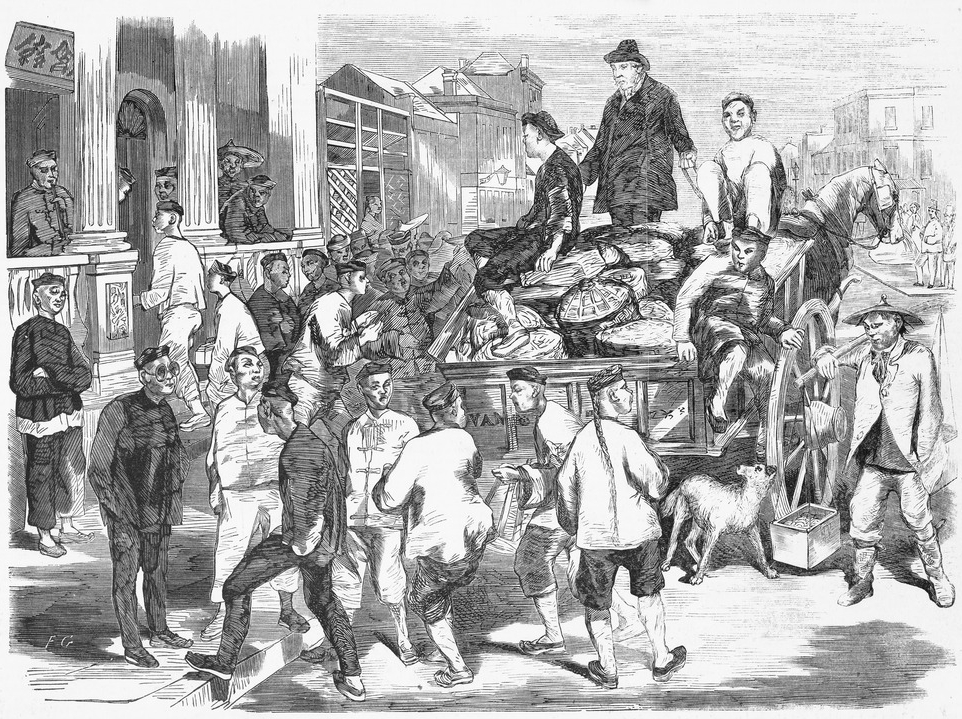 The advent of the
The advent of the 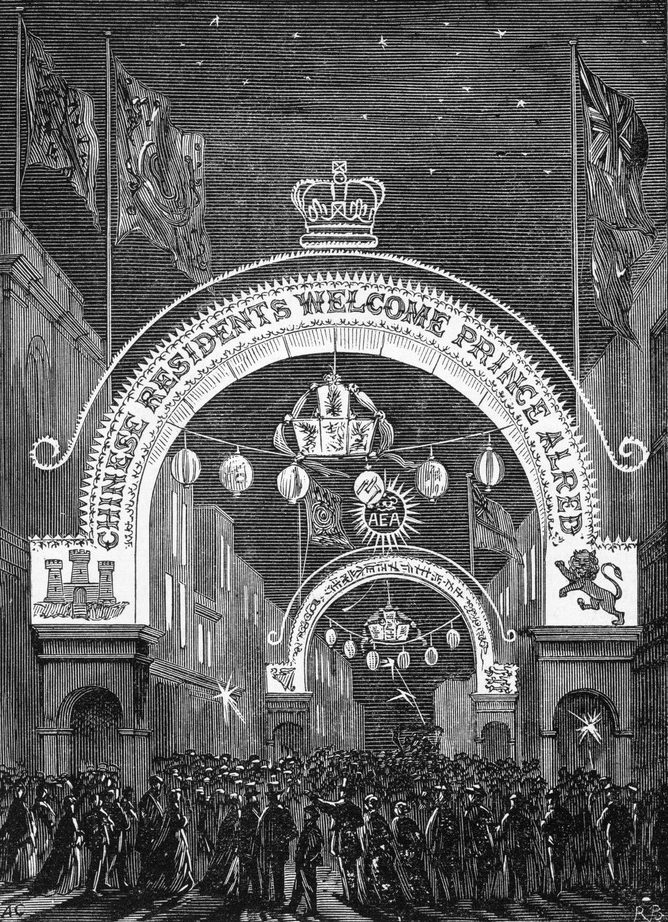 The residents of Chinatown established themselves as storekeepers, importers, furniture-makers, herbalists and in the wholesale fruit and vegetable industries, with a strong presence at the nearby Eastern Market on Bourke Street. Christian churches were built and Chinese political groups and newspapers were subsequently formed. Other members of the Chinese community who lived and worked elsewhere used Chinatown to congregate with friends. The area also provided further support to new Chinese immigrants.
Early in its history, Chinatown developed a reputation for "salubrious" enterprises including opium dens, gambling houses and brothels, but maintained a distinctly "entrepreneurial air". By 1859, Victoria's Chinese population reached approximately 45,000, representing nearly 8.5% of the colony's total population.
Australian colonial author
The residents of Chinatown established themselves as storekeepers, importers, furniture-makers, herbalists and in the wholesale fruit and vegetable industries, with a strong presence at the nearby Eastern Market on Bourke Street. Christian churches were built and Chinese political groups and newspapers were subsequently formed. Other members of the Chinese community who lived and worked elsewhere used Chinatown to congregate with friends. The area also provided further support to new Chinese immigrants.
Early in its history, Chinatown developed a reputation for "salubrious" enterprises including opium dens, gambling houses and brothels, but maintained a distinctly "entrepreneurial air". By 1859, Victoria's Chinese population reached approximately 45,000, representing nearly 8.5% of the colony's total population.
Australian colonial author
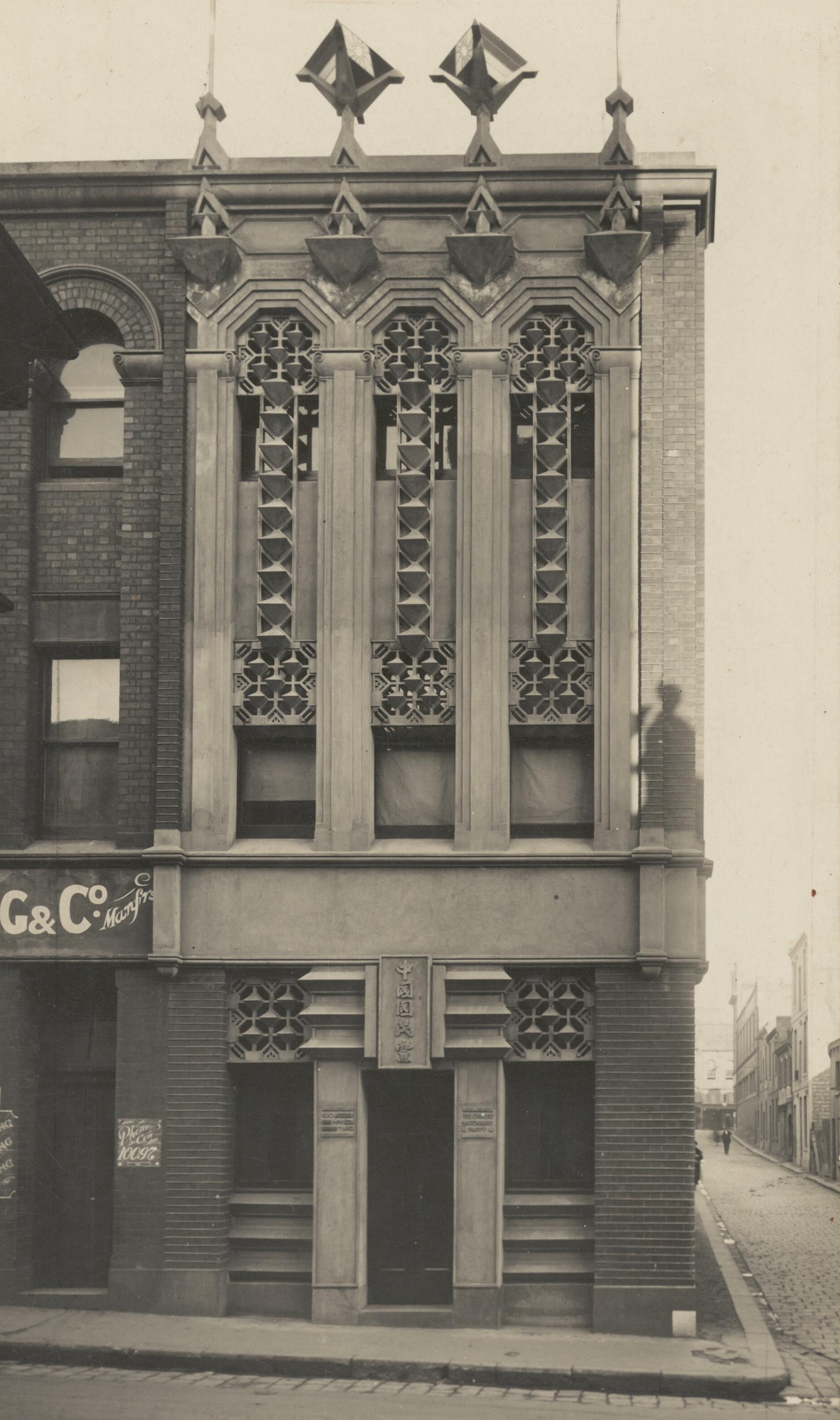 Chinatown peaked in the early 20th century in terms of population and activity, which was hampered by the Immigration Restriction Act, implemented after the
Chinatown peaked in the early 20th century in terms of population and activity, which was hampered by the Immigration Restriction Act, implemented after the 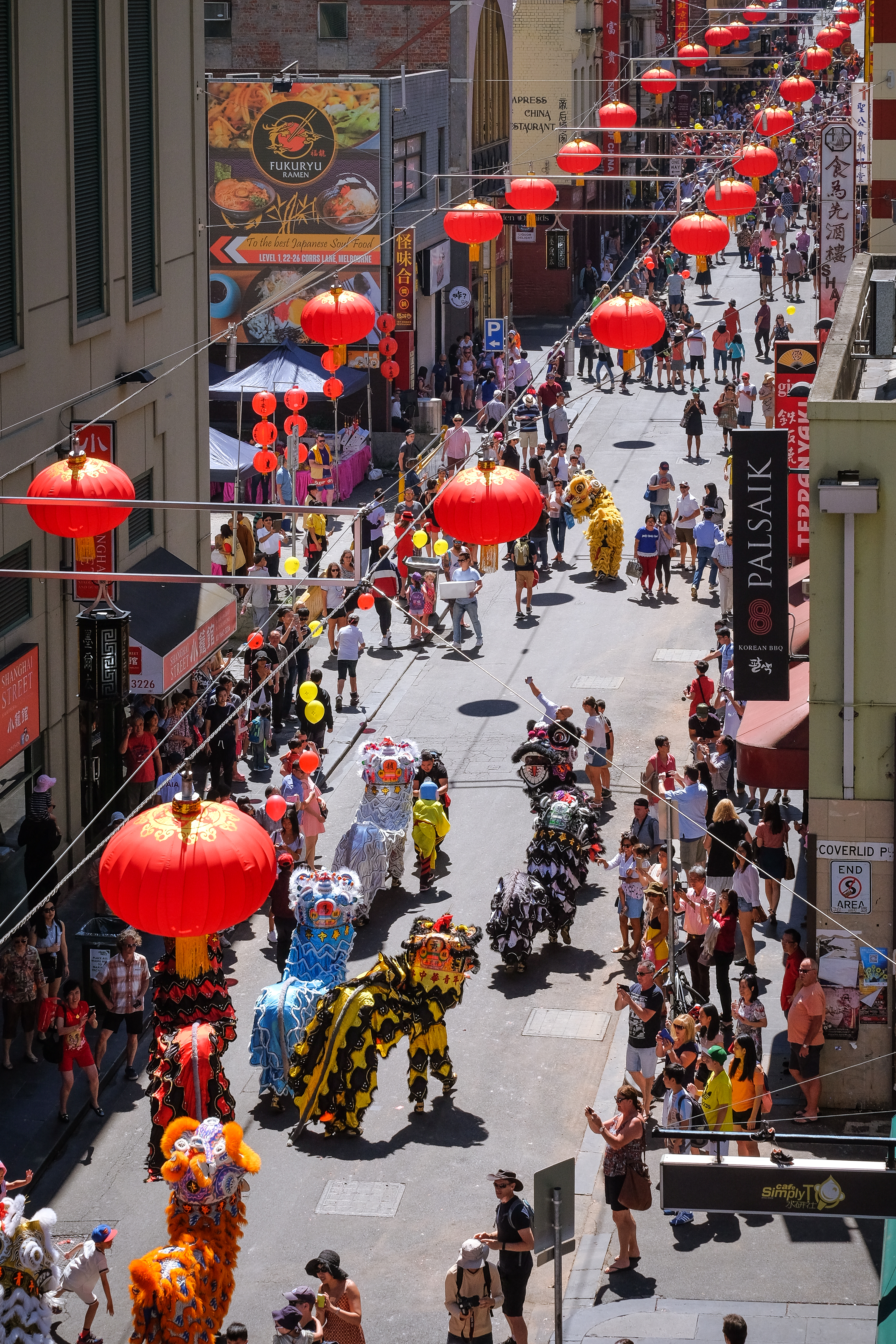 People from
People from
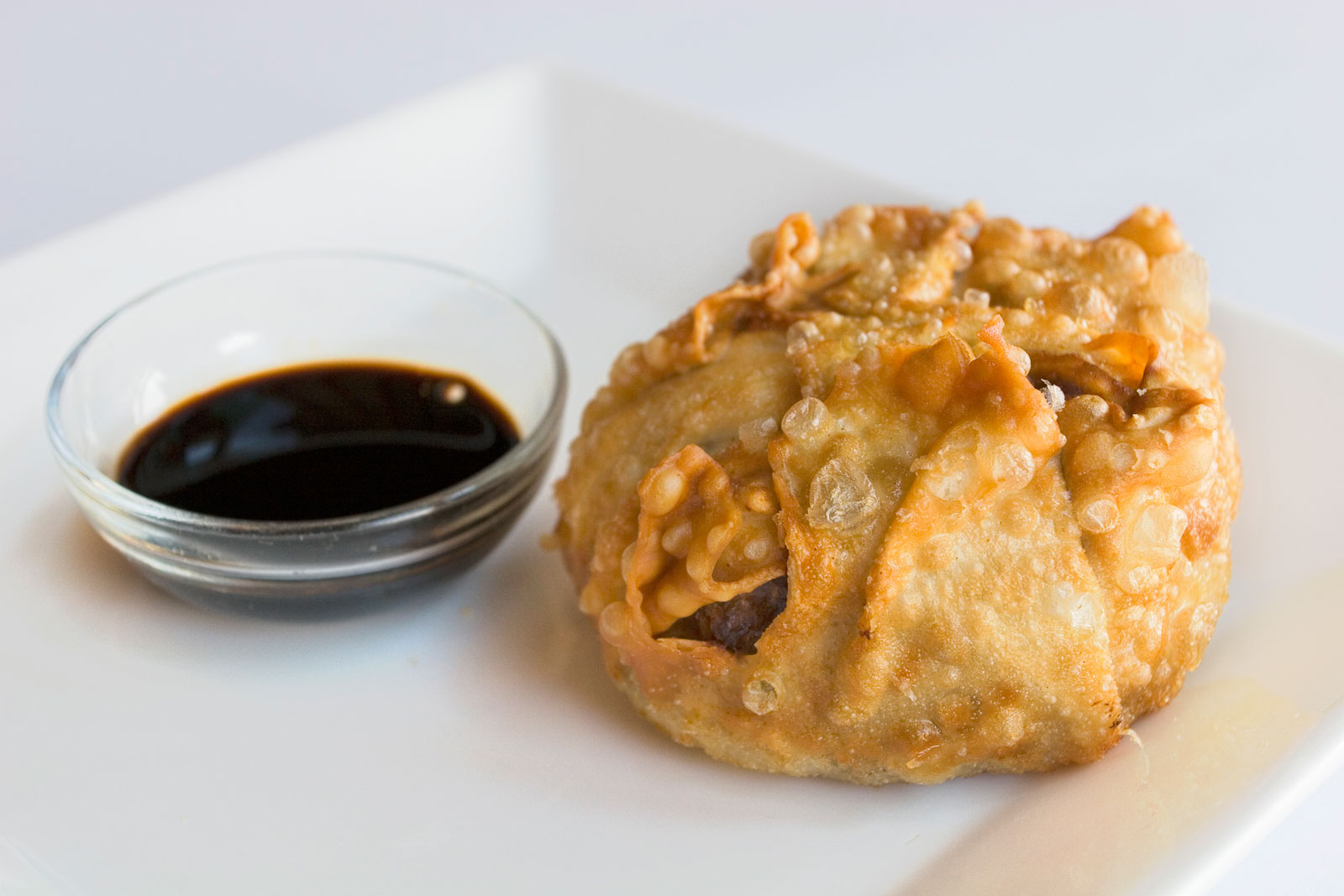 The Asian food festival is typically held in Spring and celebrates
The Asian food festival is typically held in Spring and celebrates
Chinese Museum, Melbourne - www.joyofmuseums.com - exterior.jpg, Cohen Place
File:Chinese Arch Little Bourke St Melbourne.jpg, Russell Street
Image:Melbourne Chinatown Archway.jpg, Exhibition Street
File:Gate to Melbourne Chinatown.jpg, Swanston Street
File:Num Pon Soon Melbourne.jpg, The Num Pon Soon building, built in 1863
File:Little Bourke Street buildings.jpg, The Sum Kum Lee building, built in 1887
File:Chinese Museum, Melbourne - www.joyofmuseums.com - exterior 2.jpg, Chinese Museum
File:The entrance of the Chinese Museum, Melbourne.jpg, Entrance of the Chinese Museum
File:Dr. Sun Yat Sen Statue.jpg, Statute of Sun Yat-sen
File:Melbourne Tianjin Garden.jpg, The Tianjin Garden on
Chinese Museum
Museum of Chinese Australian History.
Chinatown Precinct Association website
{{Australia Chinatown Melbourne City Centre *

 Chinatown () is an ethnic enclave in the
Chinatown () is an ethnic enclave in the Central Business District
A central business district (CBD) is the commercial and business centre of a city. It contains commercial space and offices, and in larger cities will often be described as a financial district. Geographically, it often coincides with the "city ...
(CBD) of Melbourne
Melbourne ( ; Boonwurrung/ Woiwurrung: ''Narrm'' or ''Naarm'') is the capital and most populous city of the Australian state of Victoria, and the second-most populous city in both Australia and Oceania. Its name generally refers to a metro ...
, Victoria, Australia. Centred at the eastern end of Little Bourke Street, it extends between the corners of Swanston and Spring
Spring(s) may refer to:
Common uses
* Spring (season), a season of the year
* Spring (device), a mechanical device that stores energy
* Spring (hydrology), a natural source of water
* Spring (mathematics), a geometric surface in the shape of a h ...
streets, and consists of numerous laneways, alleys and arcades. Established in the 1850s during the Victorian gold rush
The Victorian gold rush was a period in the history of Victoria, Australia approximately between 1851 and the late 1860s. It led to a period of extreme prosperity for the Australian colony, and an influx of population growth and financial capit ...
, it is notable for being the longest continuous Chinese settlement in the Western World
The Western world, also known as the West, primarily refers to the various nations and states in the regions of Europe, North America, and Oceania.
and the oldest Chinatown in the Southern Hemisphere.
Melbourne's Chinatown has played an important role in establishing the culture of Chinese immigrants
Overseas Chinese () refers to people of Chinese birth or ethnicity who reside outside Mainland China, Hong Kong, Macau, and Taiwan. As of 2011, there were over 40.3 million overseas Chinese.
Terminology
() or ''Hoan-kheh'' () in Hokkien, ...
in Australia, and is still home to many Chinese restaurants, cultural venues, businesses and places of worship. Today, Melbourne's Chinatown is a major tourist attraction
A tourist attraction is a place of interest that tourists visit, typically for its inherent or an exhibited natural or cultural value, historical significance, natural or built beauty, offering leisure and amusement.
Types
Places of natural ...
, known for its architectural heritage, annual festivals and cuisines of Asian origins, as well as its karaoke venues, bars and fashion boutiques.
Beyond Chinatown and the CBD, Melbourne's Chinese community is well-represented in other areas of the city, most notably Box Hill, where a $450 million development named "New Chinatown" is currently being constructed.
Chinatown is home to the Chinese Museum.
History
Gold rush beginnings and colonial era (1850s–1890s)
 The advent of the
The advent of the Victorian gold rush
The Victorian gold rush was a period in the history of Victoria, Australia approximately between 1851 and the late 1860s. It led to a period of extreme prosperity for the Australian colony, and an influx of population growth and financial capit ...
in 1851 attracted immigrants from around the world, including tens of thousands of Chinese prospectors
Prospecting is the first stage of the geological analysis (followed by Mining engineering#Pre-mining, exploration) of a territory. It is the search for minerals, fossils, precious metals, or mineral specimens. It is also known as fossicking.
...
. The majority were Cantonese-speaking male villagers from Hong Kong
Hong Kong ( (US) or (UK); , ), officially the Hong Kong Special Administrative Region of the People's Republic of China (abbr. Hong Kong SAR or HKSAR), is a List of cities in China, city and Special administrative regions of China, special ...
and nearby areas, including the southwestern districts of Guangdong
Guangdong (, ), alternatively romanized as Canton or Kwangtung, is a coastal province in South China on the north shore of the South China Sea. The capital of the province is Guangzhou. With a population of 126.01 million (as of 2020 ...
(See Yup), and its capital city Guangzhou
Guangzhou (, ; ; or ; ), also known as Canton () and Chinese postal romanization, alternatively romanized as Kwongchow or Kwangchow, is the Capital city, capital and largest city of Guangdong Provinces of China, province in South China, sou ...
(Sam Yap). The eastern half of Little Bourke Street was considered convenient for these immigrants, as both a staging post and a place to pick up supplies en route to the goldfields in central Victoria. The earliest lodging houses were established in Celestial Avenue, off Little Bourke Street, and by 1855, Chinese houses and businesses lined the majority of Little Bourke Street from Elizabeth to Russell streets.
It is notable for being the oldest Chinatown in the Southern Hemisphere, and the longest continuous Chinese settlement outside Asia, owing to San Francisco
San Francisco (; Spanish for " Saint Francis"), officially the City and County of San Francisco, is the commercial, financial, and cultural center of Northern California. The city proper is the fourth most populous in California and 17t ...
's Chinatown
A Chinatown () is an ethnic enclave of Chinese people located outside Greater China, most often in an urban setting. Areas known as "Chinatown" exist throughout the world, including Europe, North America, South America, Asia, Africa and Aust ...
's relocation following the 1906 earthquake. The Victorian gold rush eventually waned, causing a shift from rural living and an influx of people migrating into metropolitan Melbourne, particularly Little Bourke Street, which already had a predominantly Chinese population.
 The residents of Chinatown established themselves as storekeepers, importers, furniture-makers, herbalists and in the wholesale fruit and vegetable industries, with a strong presence at the nearby Eastern Market on Bourke Street. Christian churches were built and Chinese political groups and newspapers were subsequently formed. Other members of the Chinese community who lived and worked elsewhere used Chinatown to congregate with friends. The area also provided further support to new Chinese immigrants.
Early in its history, Chinatown developed a reputation for "salubrious" enterprises including opium dens, gambling houses and brothels, but maintained a distinctly "entrepreneurial air". By 1859, Victoria's Chinese population reached approximately 45,000, representing nearly 8.5% of the colony's total population.
Australian colonial author
The residents of Chinatown established themselves as storekeepers, importers, furniture-makers, herbalists and in the wholesale fruit and vegetable industries, with a strong presence at the nearby Eastern Market on Bourke Street. Christian churches were built and Chinese political groups and newspapers were subsequently formed. Other members of the Chinese community who lived and worked elsewhere used Chinatown to congregate with friends. The area also provided further support to new Chinese immigrants.
Early in its history, Chinatown developed a reputation for "salubrious" enterprises including opium dens, gambling houses and brothels, but maintained a distinctly "entrepreneurial air". By 1859, Victoria's Chinese population reached approximately 45,000, representing nearly 8.5% of the colony's total population.
Australian colonial author Marcus Clarke
Marcus Andrew Hislop Clarke (24 April 1846 – 2 August 1881) was an English-born Australian novelist, journalist, poet, editor, librarian, and playwright. He is best known for his 1874 novel '' For the Term of His Natural Life'', about the c ...
wrote in 1869:
Despite the cultural divide, several community leaders with strong Chinatown connections became influential and well-regarded among Melburnians more broadly, including businessman Lowe Kong Meng
Lowe Kong Meng (born 1830 or 1831; died 22 October 1888) was a Chinese-Australian businessman. Born into a trading family in Penang, Kong Meng learned English and French at an early age and worked as an importing merchant around the Indian Oc ...
and missionary Cheok Hong Cheong. Also during the colonial period, several businesses run by Australians of European descent were based in Chinatown, including the offices of '' Table Talk'', for a time in the 1880s one of Melbourne's most popular magazines.
Federation, population decline and revival (1901–present day)
 Chinatown peaked in the early 20th century in terms of population and activity, which was hampered by the Immigration Restriction Act, implemented after the
Chinatown peaked in the early 20th century in terms of population and activity, which was hampered by the Immigration Restriction Act, implemented after the federation of Australia
The Federation of Australia was the process by which the six separate British self-governing colonies of Queensland, New South Wales, Victoria, Tasmania, South Australia (which also governed what is now the Northern Territory), and Western ...
in 1901. Chinatown's subsequent decline was further exacerbated by a general shift of businesses and residents from Melbourne's central business district (CBD) to the surrounding suburbs.
Melburnians of European descent, including University students, began frequenting Chinatown eateries in the 1920s, leading to the mainstream popularity of Australian Chinese cuisine
Australian Chinese cuisine is a style of cooking developed by Australians of Chinese descent, who adapted dishes to satisfy local Anglo-Celtic tastes. Its roots can be traced to indentured Chinese who were brought to work as cooks in country pubs ...
by the mid-20th century. The dim sim, a staple of Australian Chinese cuisine, was invented in Chinatown by William Wing Young, in 1945, at his restaurant ''Wing Lee'', and has become a major snack food in takeaway outlets and supermarkets throughout the country. Young's daughter, Elizabeth Chong, became a television celebrity chef and Chinatown tour guide. Chinatown's potential as a tourist site was recognised in the 1960s by local entrepreneur and politician David Wang, whose push for the redevelopment of Little Bourke Street led to the archways of today.
 People from
People from Southern China
South China () is a geographical and cultural region that covers the southernmost part of China. Its precise meaning varies with context. A notable feature of South China in comparison to the rest of China is that most of its citizens are not n ...
, who settled in Melbourne, brought their Cantonese cuisine
Cantonese or Guangdong cuisine, also known as Yue cuisine ( or ) is the cuisine of Guangdong province of China, particularly the provincial capital Guangzhou, and the surrounding regions in the Pearl River Delta including Hong Kong and Macau.H ...
to Australia, although recently, Northern Chinese cuisine has made more of an appearance. Cantonese food was the first international cuisine to become popular as a take away food in Australia. The 1960s and 1970s saw the eradication of the White Australia policy
The White Australia policy is a term encapsulating a set of historical policies that aimed to forbid people of non-European ethnic origin, especially Asians (primarily Chinese) and Pacific Islanders, from immigrating to Australia, starting i ...
, which led to greater immigration from Indochina
Mainland Southeast Asia, also known as the Indochinese Peninsula or Indochina, is the continental portion of Southeast Asia. It lies east of the Indian subcontinent and south of Mainland China and is bordered by the Indian Ocean to the west an ...
, Singapore
Singapore (), officially the Republic of Singapore, is a sovereign island country and city-state in maritime Southeast Asia. It lies about one degree of latitude () north of the equator, off the southern tip of the Malay Peninsula, bor ...
, Malaysia
Malaysia ( ; ) is a country in Southeast Asia. The federal constitutional monarchy consists of thirteen states and three federal territories, separated by the South China Sea into two regions: Peninsular Malaysia and Borneo's East Mal ...
, Taiwan
Taiwan, officially the Republic of China (ROC), is a country in East Asia, at the junction of the East and South China Seas in the northwestern Pacific Ocean, with the People's Republic of China (PRC) to the northwest, Japan to the no ...
, Hong Kong
Hong Kong ( (US) or (UK); , ), officially the Hong Kong Special Administrative Region of the People's Republic of China (abbr. Hong Kong SAR or HKSAR), is a List of cities in China, city and Special administrative regions of China, special ...
and the People's Republic of China
China, officially the People's Republic of China (PRC), is a country in East Asia. It is the world's List of countries and dependencies by population, most populous country, with a Population of China, population exceeding 1.4 billion, slig ...
. In 2010, the ground floor of the Chinese Museum was remodelled as a visitor centre for Melbourne's Chinatown. In 2011, a memorial statue of Dr Sun Yat-sen was unveiled outside the Museum's entrance, in celebration of the 100th anniversary of the founding of the Republic of China
Taiwan, officially the Republic of China (ROC), is a country in East Asia, at the junction of the East and South China Seas in the northwestern Pacific Ocean, with the People's Republic of China (PRC) to the northwest, Japan to the northeas ...
. The traditional Chinese New Year Lion Dance has always ended at this spot, but will now end with a blessing of the statue.
Culture
Chinese New Year
TheChinese New Year
Chinese New Year is the festival that celebrates the beginning of a new year on the traditional lunisolar and solar Chinese calendar. In Chinese and other East Asian cultures, the festival is commonly referred to as the Spring Festival () a ...
is primarily celebrated in Chinatown on the first Sunday of the new Lunar year. It is the original and primary location of Melbourne's CNY festival, although the festival has expanded to multiple CBD sites in recent years, including Crown Casino
Crown Melbourne (also referred to as Crown Casino and Entertainment Complex) is a casino and resort located on the south bank of the Yarra River, in Melbourne, Australia. Crown Casino is a unit of Crown Limited, and the first casino of th ...
. The celebrations feature traditional and contemporary Chinese cultural activities and festivities, dances, Chinese opera and singing, karaoke competition, numerous stalls of culinary delights, arts and crafts, Chinese chess competitions, calligraphy and children's events.
The Dai Loong Dragon Parade, as well as the main Lion Dances (performed by the Chinese Youth Society of Melbourne, Chinese Masonic Society and Hung Gar Martial Arts School) begin at roughly 10am on the Sunday following New Year, and run till roughly 4pm. The Dragon parade begins and ends at Melbourne's Chinese Museum.
Asian Food Festival
 The Asian food festival is typically held in Spring and celebrates
The Asian food festival is typically held in Spring and celebrates Asian cuisine
Asian cuisine includes several major regional cuisines: Central Asian, East Asian, North Asian, South Asian, Southeast Asian, and West Asian. A cuisine is a characteristic style of cooking practices and traditions, usually associated with ...
with food tasting, stalls, cooking demonstrations, among others.
Other Chinese communities
Beyond the original Chinatown in the CBD, several newer Chinese communities have developed in Melbourne's eastern suburbs, such as Box Hill,Glen Waverley
Glen Waverley is a suburb in Melbourne, Victoria, Australia, east of Melbourne's Central Business District, located within the City of Monash local government area. Glen Waverley recorded a population of 42,642 at the 2021 census.
History
...
and Springvale.
An older community, with links back to the 1850s gold rush, is to be found in the regional city of Bendigo
Bendigo ( ) is a city in Victoria (Australia), Victoria, Australia, located in the Bendigo Valley near the geographical centre of the state and approximately north-west of Melbourne, the state capital.
As of 2019, Bendigo had an urban populat ...
, 150 km north-west of Melbourne.
Cultural depictions
Tom Roberts
Thomas William Roberts (8 March 185614 September 1931) was an English-born Australian artist and a key member of the Heidelberg School art movement, also known as Australian impressionism.
After studying in Melbourne, he travelled to Europe ...
, one of the leading figures of Australian Impressionism, created sketches of life in Little Bourke Street in the 1880s. During the Second World War, modernist Eric Thake created a series of works depicting Chinatown shopfronts, which now belong in the State Library of Victoria
State Library Victoria (SLV) is the state library of Victoria, Australia. Located in Melbourne, it was established in 1854 as the Melbourne Public Library, making it Australia's oldest public library and one of the first free libraries in th ...
's painting collection.
Fergus Hume
Ferguson Wright Hume (8 July 1859 – 12 July 1932), known as Fergus Hume, was a prolific English novelist, known for his detective fiction, thrillers and mysteries.
Early life
Hume was born in Powick, Worcestershire, England, the second ...
's ''The Mystery of a Hansom Cab
''The Mystery of a Hansom Cab'' is a mystery fiction novel by the Australian writer Fergus Hume. The book was first published in Australia in 1886. Set in Melbourne, the story focuses on the investigation of a homicide involving a body discovered ...
'' (1886), one of the most famous mystery crime novels of the Victorian era, is based largely on the author's observations of life in Little Bourke Street, including the "dark recesses" of the Chinese Quarter, where Detective Kilsip, the novel's protagonist, pursues his suspect. Alfred Dampier's ''Marvellous Melbourne'' play of the same year features a scene in a Chinatown opium den.
Between 1909 and 1910, Melbourne's first Chinese-language newspaper, the '' Chinese Times'', serialised Wong Shee Ping
Wong Shee Ping (c. 1875 – 1948), 黃樹屏, also known as Wong Yau Kung 黃右公/黃又公, was a Chinese writer, newspaper editor, political activist and Christian preacher. Born in the county of Kaiping in the southern Chinese province o ...
's novel ''The Poison of Polygamy
''The Poison of Polygamy'' () is a novel written in Literary Chinese and first published in Serial (literature), serial form in the ''Chinese Times'' in Melbourne, Australia, between June 1909 and December 1910. It was the first novel by a Chinese ...
'', the first novel written in Literary Chinese to be published in Australia and possibly the West. Set in Victoria during the 1850s gold rush, the novel describes life in Chinatown.
Set in Little Bourke Street, Elinor Mordaunt
Evelyn May Clowes, known by the pseudonym Elinor Mordaunt (7 May 1872 – 25 June 1942), was an English author, writer and traveller born in Nottinghamshire, England. Her travels included Mauritius and Australia; she undertook a wide variety of ...
's 1919 novel ''The Ginger Jar'' is about a love affair between a Chinese Australian hawker and a European woman.
A pivotal scene of the 1911 silent film '' The Double Event'', directed by W. J. Lincoln
William Joseph Lincoln (1870 – 18 August 1917) was an Australian playwright, theatre manager, film director and screenwriter in the silent era. He produced, directed and/or wrote 23 films between 1911 and 1916.
One obituary called him "undoub ...
, takes place in Melbourne's Chinatown.
The 1997 Hong Kong action film
Hong Kong action cinema is the principal source of the Hong Kong film industry's global fame. Action films from Hong Kong have roots in Chinese and Hong Kong cultures including Chinese opera, storytelling and aesthetic traditions, which Hong Kon ...
'' Mr. Nice Guy'', starring Jackie Chan
Fang Shilong (born 7 April 1954), known professionally in English as Jackie Chan and in Chinese as Cheng Long ( zh, c=成龍, j=Sing4 Lung4; "becoming the dragon"), is a Hong Kong actor, filmmaker, martial artist, and stuntman known for ...
, is set in Melbourne, with several scenes shot in Chinatown.
Heritage sites
Archways
Buildings
Landmarks
Spring Street Spring Street may refer to:
* Spring Street (Los Angeles), USA
* Spring Street (Manhattan), New York City, USA
* Spring Street, Melbourne, Australia
* Spring Street, Singapore
* Spring St (website), a US based lifestyle website
Subway and trolle ...
See also
*Heavenly Queen Temple (Melbourne)
The Heavenly Queen Temple is a temple dedicated to Mazu or Tian Shang Sheng Mu (天上聖母), Chinese Goddess of Sea and Patron Deity of fishermen, sailors and any occupations related to sea/ocean, also regarded as Ancestral Deity for Lim (� ...
* Chinese Museum, Melbourne
References
External links
Chinese Museum
Museum of Chinese Australian History.
Chinatown Precinct Association website
{{Australia Chinatown Melbourne City Centre *
Melbourne
Melbourne ( ; Boonwurrung/ Woiwurrung: ''Narrm'' or ''Naarm'') is the capital and most populous city of the Australian state of Victoria, and the second-most populous city in both Australia and Oceania. Its name generally refers to a metro ...
Geography of Melbourne
Culture of Melbourne
Landmarks in Melbourne
1851 establishments in Australia
Tourist attractions in Melbourne